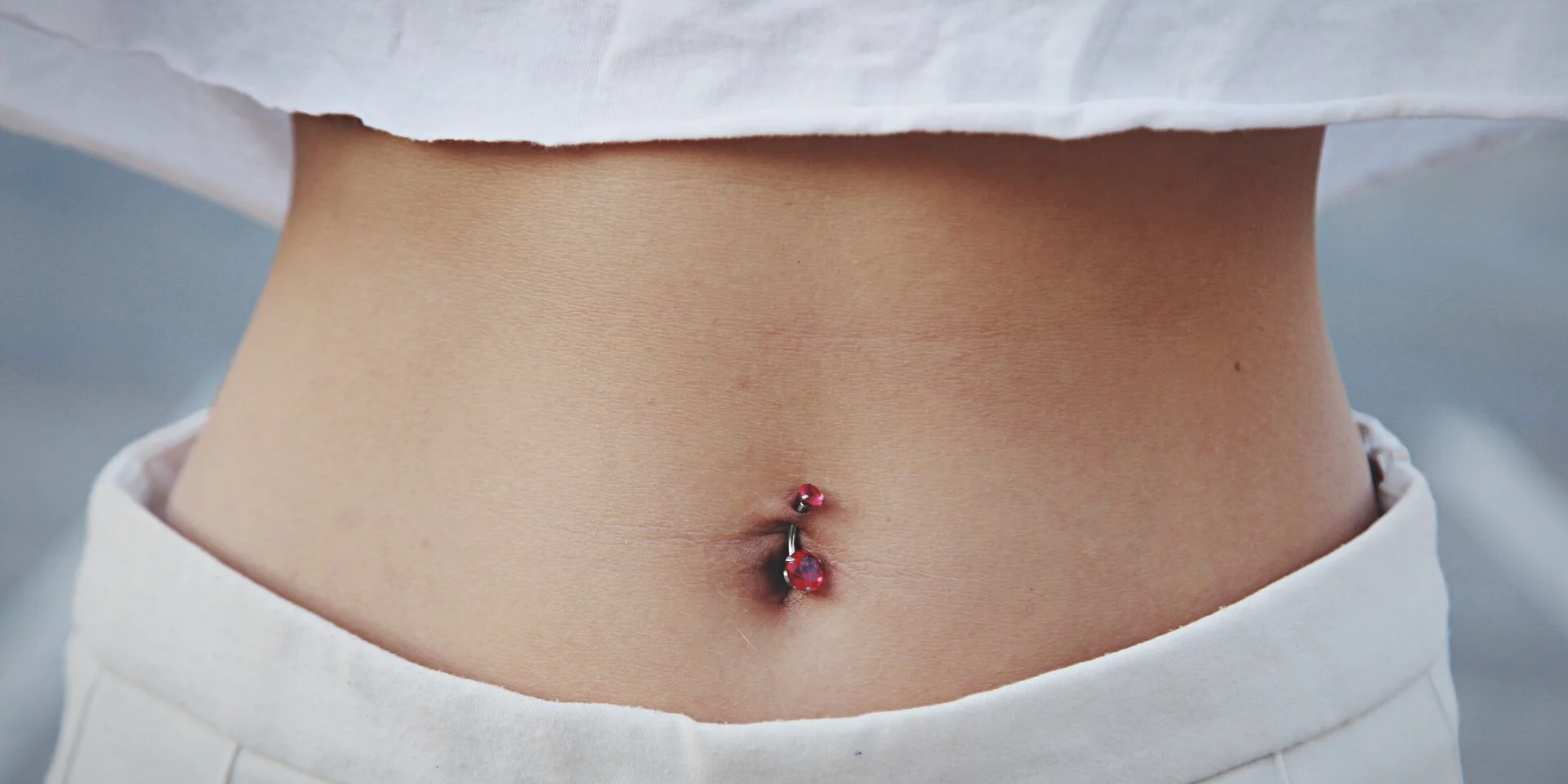Navigating the Journey: Understanding Belly Button Piercing Healing Times
A belly button piercing, also known as a navel piercing, can be a stylish addition to your body art collection. However, this seemingly simple adornment requires a dedicated aftercare routine to ensure proper healing. Understanding the typical healing timeline and potential complications can empower you to make informed decisions and navigate this process smoothly.
The Healing Journey: From Piercing to Full Recovery
The healing time for a belly button piercing can vary depending on several factors, but generally ranges from nine months to a year. This extended timeline reflects the constant movement and friction the piercing experiences due to everyday activities like breathing, bending, and clothing.
Here’s a breakdown of the healing process:
- Initial Healing (1-3 months): During this phase, the piercing site is most vulnerable to infection. Expect some redness, swelling, and tenderness. Following proper aftercare instructions diligently is crucial.
- Intermediate Healing (3-6 months): The piercing site should begin to feel less sensitive, and the redness and swelling should subside. Continue consistent aftercare to avoid setbacks.
- Full Recovery (9 months to 1 year): The piercing should be fully healed, with minimal discomfort. You can now consider changing your initial jewelry to a different style, but consult your piercer for guidance.
Important Note: These are general timeframes. Your individual healing process might progress faster or slower depending on your body’s response and adherence to aftercare instructions.
Factors Affecting Healing Time
Several factors can influence how long your belly button piercing takes to heal:
- Aftercare Practices: Following the piercer’s aftercare instructions meticulously is the most crucial factor for optimal healing. This might involve cleaning the piercing twice daily with a saline solution and avoiding harsh soaps or irritants.
- Overall Health: Individuals with compromised immune systems or chronic health conditions might experience a longer healing time.
- Jewelry Material: High-quality implant-grade titanium or surgical steel jewelry is generally recommended to minimize irritation. Avoid low-quality metals like nickel that can trigger allergic reactions.
- Anatomy: The depth and placement of the piercing can affect healing. Some individuals have deeper navels, which might require extra care to avoid complications.
Signs of a Healing Piercing
Here are some positive signs your belly button piercing is healing properly:
- Decreasing redness and swelling: The piercing site should gradually become less red and swollen over time.
- Reduced discharge: A clear, white discharge is normal during the initial healing phase, but it should decrease as the piercing heals.
- Diminished pain: The piercing site should become less sensitive as healing progresses.
Identifying Potential Complications
While complications are less likely with proper care, be aware of potential signs that might indicate an infection or other issue:
- Persistent redness and swelling: If redness and swelling persist for several weeks or worsen, it could be a sign of infection.
- Excessive or foul-smelling discharge: Yellow, green, or pus-like discharge with a foul odor might indicate infection.
- Fever: A fever accompanying the above symptoms warrants immediate medical attention.
- Bleeding: Some minimal bleeding is possible after the piercing, but excessive bleeding requires a visit to your piercer.
- Migration or rejection: If the jewelry appears to be moving upward or outward, or if the piercing site shows signs of rejection, consult your piercer.
Seeking Help When Needed
If you experience any concerning symptoms that suggest an infection or other complications, don’t hesitate to seek help from a reputable piercer or healthcare professional. Early intervention can often prevent further complications and ensure a smooth healing process.
FAQ (Frequently Asked Questions)
Q: What can I do to expedite the healing process?
A: The most effective way to speed up healing is to follow your piercer’s aftercare instructions meticulously. This might include cleaning the piercing twice daily with a saline solution, avoiding harsh soaps and irritants, and wearing loose-fitting clothing that won’t snag on the jewelry.
Q: Can I swim or shower with a new belly button piercing?
A: It’s generally recommended to avoid swimming pools, hot tubs, and bodies of water for several weeks after getting a piercing. These environments harbor bacteria that can increase the risk of infection. Showering is generally safe, but avoid using harsh soaps or scrubbing the piercing site directly.
Q: Is it okay to change the jewelry myself before it’s fully healed?
A: It’s strongly advised against changing the jewelry yourself, especially during the initial healing phase. The initial jewelry is specifically chosen by your piercer to accommodate.






More Stories
Where to Watch USMNT vs Jamaica National Football Team
How I Met My Monster
How Should a Ring Fit